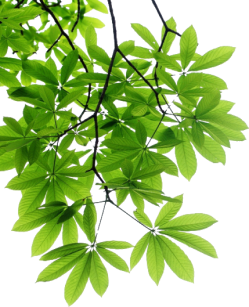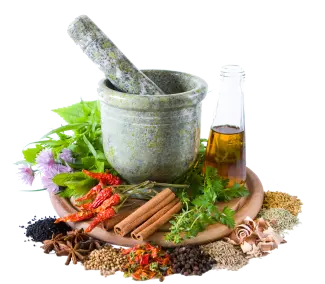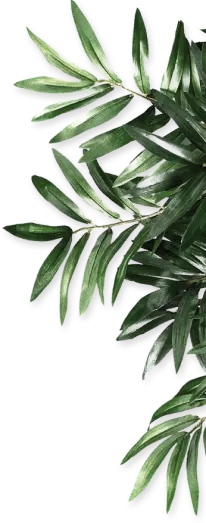Introduction
There are various form of Shirodhara such as Tailadhara, Takradhara, Ksheeradhara, Jaladhara and Kvathadhara. Classically this procedure is not described under the Panchakarma, but it incorporated under Snehana karma. Murdhatailam has been described in the Ayurveda which is of four type’s viz. Shiroabhyanga, Shirosheka, Shiropichu, Shirobasti. These are superior in their succeeding order. It is one of Bahya Snehana (external oleation therapy) procedure in which Snehan is applied in head or it is a procedure wherein involves gently pouring liquids over of the forehead and has been indicated for psychosomatic disorders and neurological disorders etc. These disorders are not only the diseased condition but also affect the quality of life and cause anxiety, depression and work ability is decreased. In Ayurveda human body is compared to an inverted tree where the head is the main part of the body and other organ are its branches. So the head controls every system, hence application of medicine in the form of Shirodhara, on the head can cure many disease of different parts of the body. Classically Shirodhara is advised for many diseases like Headache, Daha (burning sensation), Paka (Abscess), Vrana (Wound), Arunsika (Boils) etc. It also indicated in Ardhavbhedak (Migraine), Suryavarta (Type of headache). Application of oil does not follow any form of massage. By the employment of this procedure one can achieve all the benefits in dermatological condition of scalp as well as psychological disorders. It can be performed in painful conditions or ulcerations of the scalp also. References regarding Shirodhara were collected from various textbook, published research papers, previous work done and compilation was done. Concept of Shirodhara and procedure was studied in detail.
Defination
Shirodhara term comes from the Sanskrit words, Shiro-means Head and Dhara-means Flow. Shirodhara is a form of Ayurveda therapy that involves gently pouring warm liquids over the forehead. It is the process in which medicated oil, milk, Kwatha is poured in a continuous stream of drip on the forehead in a specific manner and height.
Procedure
The Shirodhara procedure is divided in to 3 parts
1.Purva Karma
Materials required- Shirodhara patra, Shirodhara stand, Shirodhara table, Gauze, cotton earplug, Vessels, Soft towels, Suitable oil/milk/any liquid. Preparation of the patient- The patient is thoroughly examined whether he is fit with for procedure. Patient should be advised to pass stool and urine. Then pulse, temperature and blood pressure of the patients should be recorded. Patient is advised to lie down in supine position and Dhara Patra should be fixed 4 Angula above the forehead. The eye and ear should be covered with cotton to prevent the entry of liquid into eyes. Selection of Sneha- According to Dharakalpa, Sneha is taken according to the condition of Dosha
Vata Dosha- Tila Taila
Pitta Dosha- Ghrita
Kapha Dosha- Tila Taila
Rakta Dosha- Ghrita
Vata + Pitta + Rakta- Ghrita and Taila in equal par portion
Vata + Kapha + Rakta- ½ part Ghrita and 1 part Tila Taila
2. Pradhana Karma
Shirodhara room should be cleaned well, ventilated and very quiet. Shirodhara is done in the morning time on empty stomach after massage. Any type of liquid (Taila, Milk, Kvatha, water) should be kept in Dharapatra. Dhara should be poured continuously on forehead neither very fast nor very slow. The liquid of shirodhara should not be too hot or too cold. The stream of Dhara liquid should not be too thick or thin. When the liquid starts pouring then the vessel is moved in the pendulum manner starting from one lateral side to the other lateral side. The liquid is collected in another vessel kept and is used to refill the Dharapatra before it becomes empty. Shirodhara process is done for at least ½ an hour in the morning up to 14/21 days. Temperature of liquid for Shirodhara should be above to the body temperature. Period for changing the liquid-When milk and water is used in Shirodhara, it should be changed every day. When Dhanyamla is used, it can be used up to 3 days. The oil also should be changed every 3rd day, but it can be reused, so in the first 3 days, half of the oil should be used, for next 3 days the other half of the oil should be used and on the 7th day all the first and second half both are mixed together, then it should be discarded.
3. Paschata Karma
After the Shirodhara process is completed; the head of the patient should be wiped out and dried. This is followed by a short duration of rest and massage of the body including head with oil and then a lukewarm bath. The patient is advised to have a Pathya Ahara (light diet).
Indication
Stress and psychosomatic disorders such as IBS (Irritable Bowel Syndrome), Neurological disorders (Headache, Epilepsy etc.), Psychiatric disorders (Psychosis, Neurosis, Insomnia etc.), Convulsive disorders and also in Psoriasis, Eczema, Hypertension etc. Shirodhara is also used in patient Vata Vyadhi, Facial palsy, Loss of memory.
Contraindication
In Kaphaja Vikara, Shirodhara further increase Kaphaja, this makes the diseases difficult to cure.
Discussion
Clinically, the efficacy of Shirodhara is proved; still, it is a difficult task to understand the mode of action of this procedure. Shirodhara is effective in the following ways. According to Ayurveda, in a living being, the head is the substratum of all the sense faculties, or Indriyas (sense organs), and it is also known as Uttamanga. Because of this, Shirodhara gives strength to the Prana and Indriyas, which are mostly vitiated in cases of psychological disorders. Indriyas are in close contact with the mind, so when Indriyas stay healthy, the mind automatically stays healthy. Shirodhara thus keeps the body and mind healthy.
Imbalance of Prana, Udana, and Vyana Vayu, Sadhaka Pitta, and Tarpaka Kapha can produce stress and tension. Shirodhara reestablishes the functional integrity between these subtypes of Dosha through its mechanical effect.
Therapeutic Effect of Medicament
As per the principle of drug absorption, absorption of the substances through the skin depends on a number of factors, the most important of which are concentration duration of contact, solubility of medication, and physical condition of the skin and part of the body exposed. In Shirodhara oil form is used which has good dense concentration with longer duration of contact. Also the skin over the scalp is thin as compared to other part of body and absorption is faster and more from the scalp. (As per the principle of drug absorption maximum absorption is in the scalp region and comparatively oil is better absorbing then water.)
Dermal absorption - The skin is relatively permeable to fat soluble substances and relatively impermeable to water soluble substances. Essential oil molecules are so minute that when they are applied to the skin; they are able to pass through the stratum corneum (the outer layer of the epidermis). From here the oil molecule passes through dermis, into the capillaries and into the bloodstream. Absorption also occurs through the hair follicles and sweat ducts. There are many factors that affect absorption of an oil molecule. Both rate of circulation and the warmth of the skin increase blood flow to the surface, therefore increasing the skin’s ability to absorb the oil. Circulation and warmth can be increased by massage.
Procedural Effect of the Shirodhara Process
Each substance at a certain altitude possesses potential energy, and that energy becomes kinetic energy when it falls down from a certain altitude under 'Law of Energy Conservation'. This law means that energy can neither be created nor destroyed; rather, it can only be transformed or transferred from one form to another. Potential energy depends on the mass and height of the substance. If height remains constant then potential energy depends on mass of substance or mass energy, more mass of a substance will be the energy the substance possesses. When anything pours on the forehead from a certain height due to the change in the form of energy it generates momentum, it can cause voltage changes and stimulate the generation of nerve impulses or accentuate the conduction of nerve impulses. The magnitude of momentum is the factor that determines the voltage difference between the generation and conduction of the nerve impulse if its magnitude is small; the energy is absorbed by the skull. According to modern physiology continuous electrical activity in the brain that generates electromagnetic waves and that is recorded by the Encephalogram (EEG).
Effect of Temperature in Shirodhara Procedure
The continuous flow of warm liquid on the forehead for such a long period will cause mild vasodilatation. Shirodhara improves the circulation in these areas and help in regularization the blood supply of the brain. Vibration along with temperature may activate the function of thalamus and the basal forebrain which then brings the amount of serotonin and catecholamine to the normal stage.
Effect of Constant Pressure in Shirodhara Procedure
Constant pressure and vibration produced in the Shirodhara procedure, amplified by the hollow sinus present in the frontal bone. The vibration is transmitted inward through the fluid media of cerebrospinal fluid (CSF). Pressure also affects impulse conduction. If prolonged pressure is applied to a nerve, impulse conduction is interrupted, and part of the body relaxes in Shirodhara's procedure. Due to the tricking of medicated liquid over the forehead, prolonged and continuous pressure causes tranquility of mind and reduces stress by modulating nerve stimulation.
When nerve ending of autonomic nervous system is stimulated, they produce chemical substances like Acetylcholine which exists in the tissues in the inactive form and is activated by a nerve impulse vibration produced due to continuous pouring of liquid over the forehead which may stimulate nerve ending and in turn Acetylcholine cause fall of blood pressure leading to decreased activity of central nervous system resulting in tranquility of mind. During the process of patient concentrations of Dhara Drvya (Medicated oil or any type of liquid), this is falling on his forehead, which increases the intensity of brain waves and decreases the brain cortisone and adrenaline level. This factor is also work as an anti-stress effect of Shirodhara. On the basis on Marma- Some Marma (Vital spot) are located in forehead and head region as mentioned in Ayurveda classics. Mainly Sthapni, Utshepa, Avarta, Shankha and Apanga Marma are situated in this region. According to Acharya Bhela Bhrumadhya (Between both eyebrows) is the site of Chitta (Mana). It is also place of Sthapni Marma. Most of the Marma of head region are Agni and Vayu Pradhana Mahabhoota. The site of Sthapni Marma and the site of pituitary and pineal gland exist at the same level. The function of pituitary gland is controlled by hormones. It is the master of the gland. It has the capacity to maintain all the endocrine system of human body. Mental stress and irritability were the causative factors were endocrine system gets imbalance of its normal function. Due to the stimulation of Sthapni Marma and indirect stimulation of pituitary gland brings changes in psycho-somatic level. Hence Shirodhara therapy helps in reliving the mental stress by regulating the normal function of this gland.
Conclusion
Shirodhara is an important therapeutic measure in Ayurveda system of medicine, which has got worldwide popularity because of its simple administration and effectiveness in several disorders and life style diseases. It is a purifying and rejuvenating therapy which eliminates toxins and mental exhaustion as well as relives stress and any ill effects on the central nervous system. On the basis of above description, it is clear that Shirodhara has both the therapeutic effect of medicament and procedural effect. These can be understood from the aspect of Ayurveda, mechanical and Marma science. Shirodhara can be used for treatment of scalp, hair and psychological disorders.



.webp)




